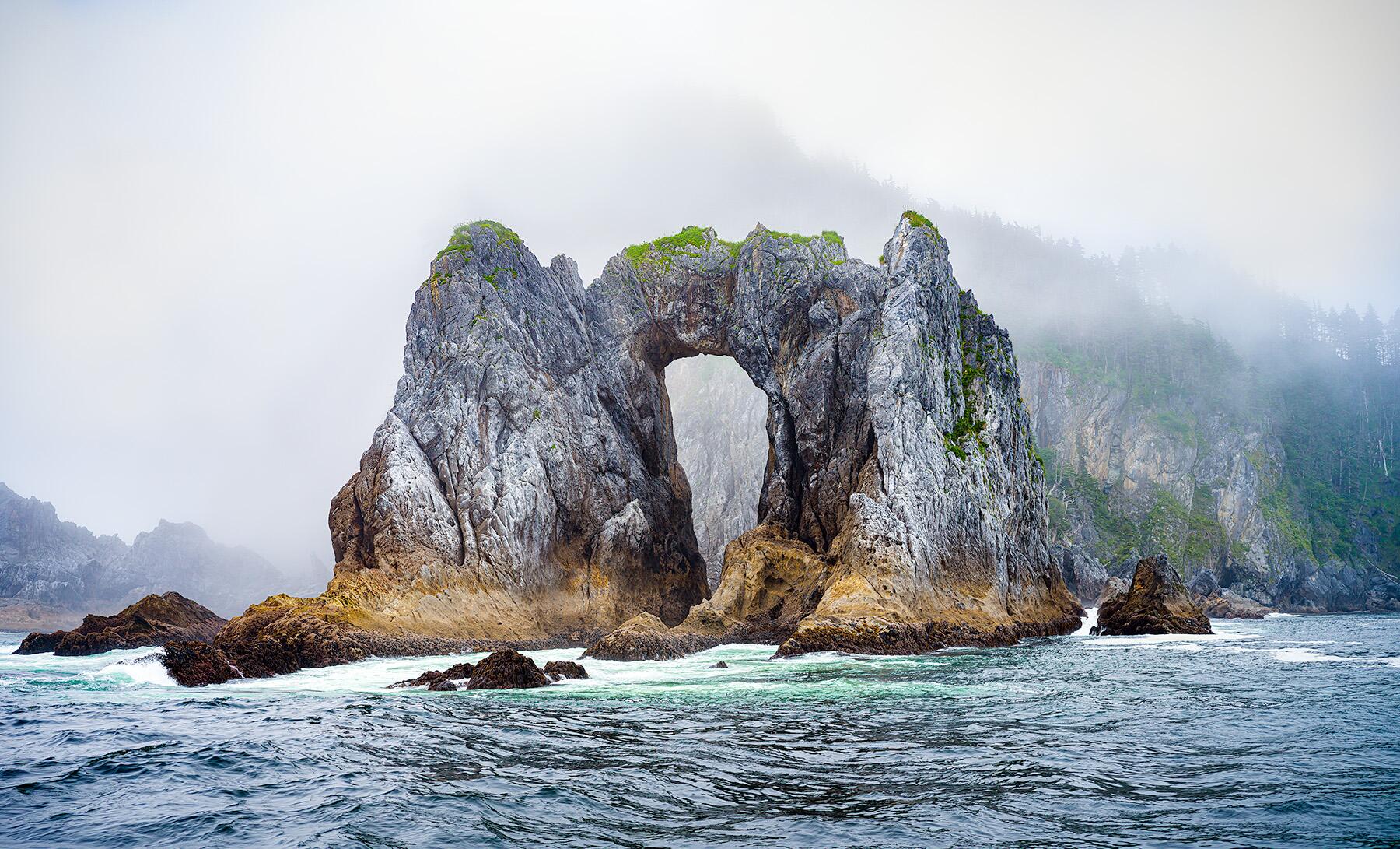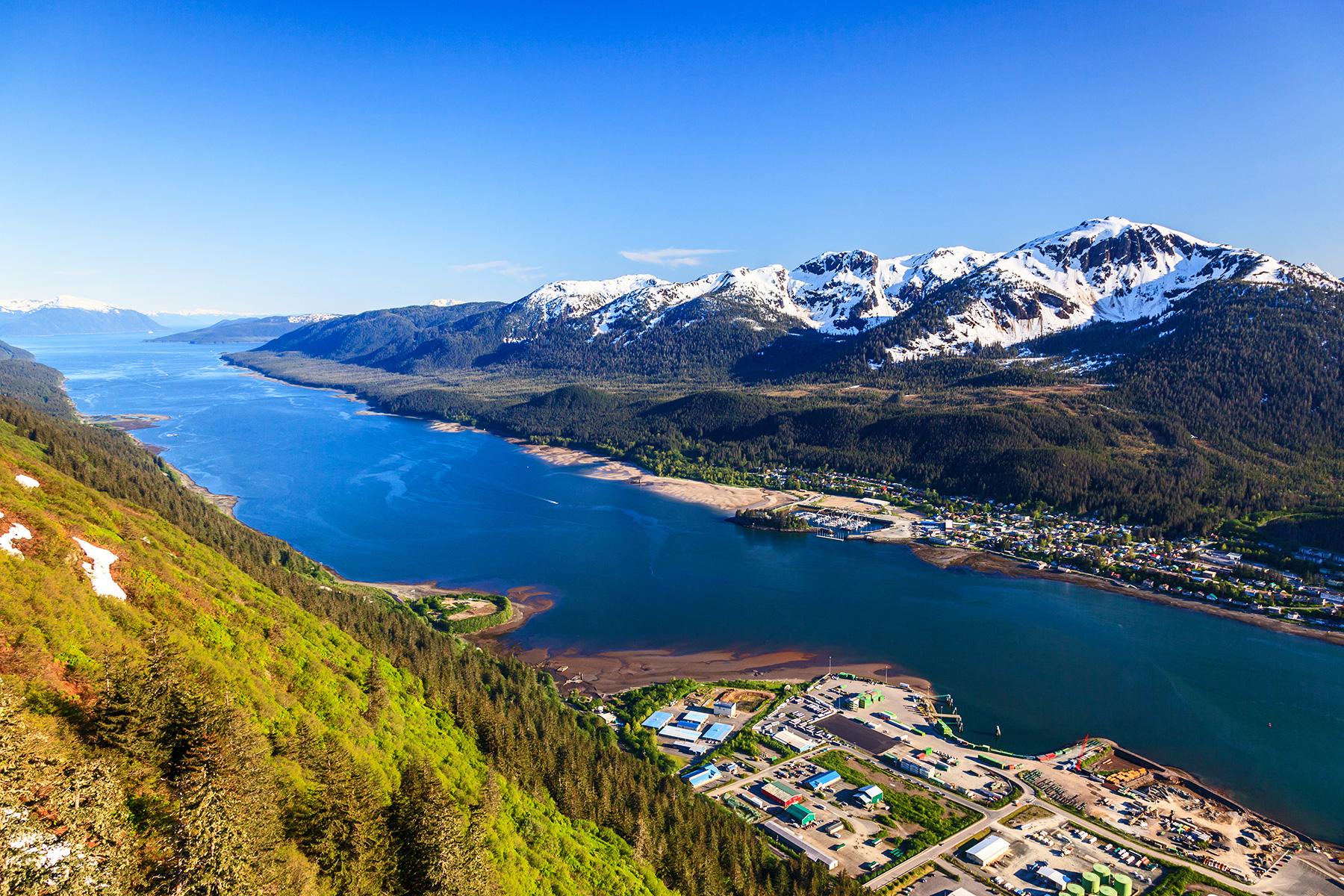Always be prepared for the great outdoors.
Suitcase space is precious, but when you’re venturing out to the Alaskan wilderness or even out for an Alaskan cruise, you’ll want to be prepared. Here are ten things you should never omit when you pack for your Alaskan vacation.
Waterproof or Water Resistant Footwear
Wherever your Alaskan travels take you, it’s a good bet you’ll encounter plenty of moisture. Even if most of that time is spent on concrete, you’ll still want to avoid wet feet. A cursory glance at any local and their brown-booted staple, the Xtratuf serves as a reminder of the importance of having dry feet when you’re doing a lot of walking. If you don’t feel like splurging for and packing a big pair of boots, make sure your hiking shoes are at least water-resistant.
INSIDER TIPMany guiding and outfitting companies rent rubber boots if necessary. Call before you leave and save yourself some precious suitcase space.
Sunscreen and Hat
If your feet are dry, that probably means the sun is in your eyes. While locals may wear their sunburned arms and ears like badges of honor, a nasty burn can torpedo the best laid plans. You’ll probably be wearing long sleeves so you won’t need too much, but bring along a small container of sunscreen to protect the most sensitive areas (even if you’re traveling in the winter!). This is especially true if you plan on spending time on the water. Water will reflect the sun and can burn twice as fast.
Recommended Fodor’s Video
Bug Net and Bug Spray
The scourges of the Alaskan wilderness, mosquitoes, no-see-ums, horseflies, white sox, and plenty more six-legged foils populate the state. For those that plan on backpacking or camping, a bug net is essential. It’ll be impossible to enjoy the scenery if you’re spending every waking moment swatting frantically at the air or taking shelter in your tent. Bug nets and spray take up very little space, but could very well be the most important items you bring.
Wool or Similar Clothing
Packing clothes for Alaska can be difficult. More times than not, it’s necessary to bring clothing that will keep you comfortable in all four seasons. You can mitigate this by leaving your cotton clothing at home and instead packing wool, polyester, or other materials that wick away water and retain heat when wet. Layering these items along with a waterproof outer layer will make you as prepared as possible for any weather.
INSIDER TIPKeep your torso toasty. If your core is warm, your body won’t have to shunt blood away from your extremities. It may not seem intuitive, but a nice down vest can go a long way in keeping your fingers warm.
Rain Jackets, Rain Pants, and Waterproof Cases
Wool and similar materials are all well and good, but they don’t do much in a rainstorm, so it’s smart to pack some raingear. Bring battle-tested items that have stitched seams and nylon fabric or are rubberized. Rubberized gear doesn’t breathe as well as lighter shells, but you’ll be glad you have it if the rain starts pouring. Also consider bringing an Otter Box or similar item to protect your phone and other electronics. These items can also be helpful if you plan on kayaking or rafting during your trip.
INSIDER TIPDry bags come in various sizes and are a great way to keep your extra layers and electronics dry.
Binoculars
For most visitors, a trip to Alaska is not complete without wildlife sightings. But these encounters aren’t always right outside your window or along the trail (which may be a good thing). Whether you’re scanning the tundra for grizzlies or the water for whales, a quality, sturdy, and waterproof pair of binoculars are worth their weight in gold. If you’ll be on the water, consider attaching a small flotation device to the straps just in case.
Animal and Plant Identification Books and Apps
There’s a good chance you already know what a humpback whale, moose, and wolf look like, but Alaska is populated with thousands of species and it’s impossible to recognize them all at first glance. Bringing along identification books can add a layer of intimacy and interaction to your trip as you identify your first pigeon guillemot or rosy twisted stalk. Several identification apps also now exist including several that can help you identify birds by their plumage or call.
Swiss Army or Pocket Knife
This tool should be a staple for anyone planning on spending a night in a tent. These handy little knives are great in a pinch, take up zero space, and can replace many larger items that would fill up your backpack. Whether you need a line cut, a can open, or a branch sawed down to hold a hot dog over a fire, always bring along a knife.
INSIDER TIPDon’t get your knife taken at TSA! Check it.
Maps and Printed Itinerary
Hard copies of essential travel information have been steadily phased out as people become more reliant on their phones for digital copies. But Alaska is one of those places where cell service is not always reliable. Cities and towns are usually fine, but along stretches of highway and deep within national parks, service can’t be depended on. Not to mention that phones die, get dropped, end up in puddles, or are exposed to the elements in various ways. Sometimes there’s just no replacing a good map, which can be essential when you’re traveling in a place like Alaska. Same goes for your itinerary and directions. Print out anything you think you’ll need before you leave and pack the print-outs in your suitcase.
First Aid Kit
Depending on where you are, medical attention may not be immediately accessible. Even a small med kit with band-aids, a sling, anti-septic, and painkillers can make a sprained ankle or other ailment much more manageable. A thermal blanket, a mirror, flares, or other objects that can signal for help are useful items to keep in your kit, especially if you’ll be going hiking or backpacking.
INSIDER TIPIf going into the backcountry with a guiding company, ensure that their guides are WFR (Wilderness First Responder)-certified and disclose any medical information they may need to know before your arrival.




